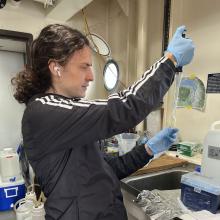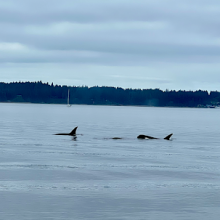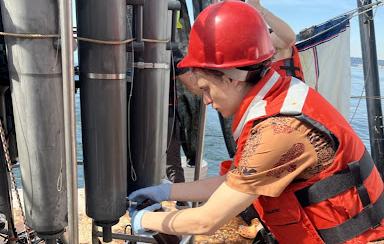My name is David Garcia-Prieto, and I’m interning in PMEL Ocean Molecular Ecology group for the summer. My current funding source, NOAA-LMRCSC, is part of NOAA’s Educational Partnership Programs & Minority Serving Institutions. This program supports doctoral students through graduate school and provides students with professional experience. As part of the program, NOAA’s Experiential Research and Training Opportunities (NERTO) gives students the opportunity to work alongside NOAA scientists for a 12 week internship. The internship allows me to gain experience in a government facility and to familiarize myself with NOAA culture, all while gaining more practical scientific experience. When searching for a home base for my NERTO internship, I found that ‘Omics Lab does genomic work complementary to my Ph.D. research. We are interested in using environmental DNA (eDNA) as a tool to study the microbial and zooplankton communities in seawater and their response to changing physical ocean conditions.
At the beginning of the I performed literature reviews, familiarized myself with the lab's protocols & SOPs, gained hands-on experience with PCRs, and worked in RStudio. I then had the privilege of participating in a 5-day research cruise around the Salish Sea. The cruise was one of the Washington Ocean Acidification Centers’ (WOAC) expeditions to help monitor the Puget Sound’s health by taking measurements like dissolved inorganic carbon (DIC) and oxygen content, things that can impact microbe and zooplankton populations. WOAC is a collaborative effort between U.W. scientists and interns to sample and analyze resulting data. Amongst other things, WOAC provides water quality monitoring of six shellfish hatcheries and rearing areas. The monitoring helps inform hatchery farmers when seawater requires treatment due to changing ocean chemistry.

We sailed aboard the R/V Rachel Carson where I collected 1-liter water samples from 11 sites at various depths (surface, middle and near bottom) of the water column to look at microbial and zooplankton community composition through eDNA. After collecting the samples, I filtered the water samples across a small filter in a sterile environment with a portable peristaltic pump. These filters catch most organic material, including microbes. Next, DNA was preserved with ethanol and stored in a freezer. Back in the lab, we extracted the DNA from these filters, PCR amplified target markers, and quantified the product. With a Nanopore-long read DNA sequencer, the DNA was sequenced, and the resulting data was run through an RStudio pipeline which helped visualize the recovered community composition.

This research is important as it allows us to understand the microbial and zooplankton composition of the water column as they are the base of the ecosystem. Microbes and other small, “simple” life forms are some of the first to acclimate to a changing environment, so we can use them as a biomarker to monitor a changing system. For my project, we are interested in examining the seasonality of microbe communities. In spring, blooms in phytoplankton occur due to the winter mixing, whereas in the summer months, the water becomes stratified, likely driving zooplankton closer to the surface. Seasonal changes are important for us to monitor and can help us understand the system in terms of long-term changes. The sheer abundance of microbes and zooplankton makes them important in biogeochemical cycling. Examining their community structure across time allows us to estimate carbon and nutrient cycling by looking at the metabolic potentials of the organisms. Seeing orcas on my cruise reminded me of the trophic energy transfer that occurs in the Salish Seas. While it may take millions of microbes and zooplankton being eaten by bigger fish until an orca comes by and eats them, studying the trends of lower trophic levels allows for a better understanding and appreciation of the entire ecosystem.



